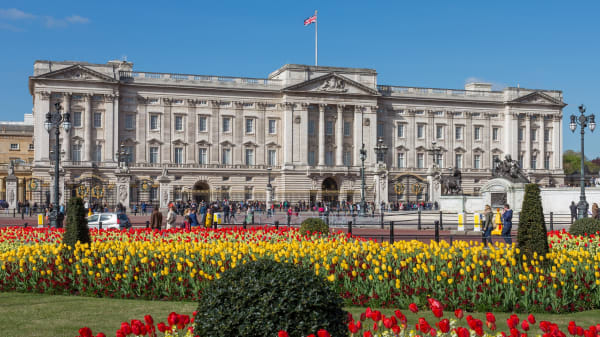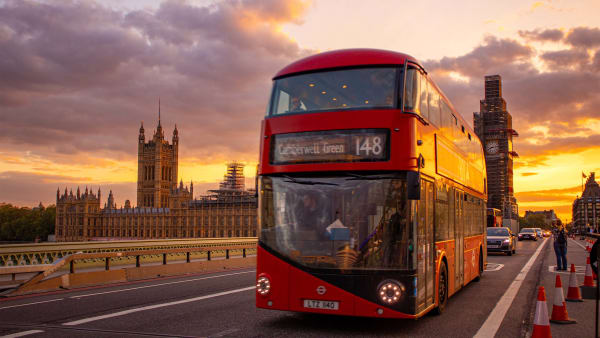Travel passes, cards and tariffs
The differences between Travelcards, Oyster cards, and contactless payment methods can seem confusing. Here you will find the advantages and disadvantages of each, as well as comparisons to determine the most convenient option for you.
Travel passes, cards and tariffs
The differences between Travelcards, Oyster cards, and contactless payment methods can seem confusing. Here you will find the advantages and disadvantages of each, as well as comparisons to determine the most convenient option for you.
There main travel pass options when using London public transport are the Travelcard, the Oyster card, and contactless payment methods. The difference between them is quite straightforward.
Travelcards are unlimited transport passes for public transport. This subscription comes in different duration options (1 day, 7 days, 1 month, or 1 year). Depending on the zone validity of the pass you get, the Travelcard includes all London transport for those zones - London Underground, Tube, DLR, Overground, and buses.
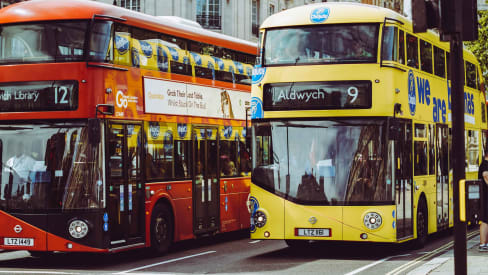
The Travelcard you are most likely to use is the 7-day Travelcard for zones 1-2, since this is where you’ll be spending the majority of your time as a tourist.
Oyster cards, on the other hand, are simply physical supports for travel credit. You can load as much credit as you want on an Oyster card and use it either for pay-as-you-go travelling (all London public transport) or to pay for a Travelcard subscription.
Finally, a contactless payment method is simply a bank card (debit or credit) or mobile device that supports contactless payment (like an Apple Watch or similar). A contactless method can only be used to pay as you go for your journeys on all London public transport.
It’s also essential to know that for the purposes of ticket validity, each day is considered to start at 4:30 am and end at 4:29 am the following day. This means that a weekly ticket from Monday to Sunday will actually be valid from Monday morning at 4:30 am to the following Monday at 4:29 am (the night going from Sunday to Monday).
Zone system and peak/off-peak hours in London
For the purposes of public transport pricing, two factors are considered in London: the zones and peak/off-peak hours.
There are a total of 9 concentric zones throughout which transport operates. The areas where you will spend the majority of your time as a tourist are zones 1 and 2, the most central ones. This is also where you can find the majority of London’s attractions and monuments. Nevertheless, there are some important sites you can find outside zones 1 and 2.
- Heathrow Airport - Zone 6
- Gatwick Airport - Zone 6
- Wembley Stadium - Zone 4
- Wimbledon (All England Lawn Tennis and Croquet Club) - Zone 3
- Hampton Court - Zone 6
Now, while the zone system serves to price tickets and passes for the entire London Rails and Underground network (which includes the Tube, the DLR, and Overground), London buses do not respond to this zone system in terms of pricing.
All bus fares in London are priced as if you were travelling only in zones 1-2. This means that even though London buses operate throughout the 9 zones, bus journeys always cost the same. It also means that if you have a pass or ticket valid for zones 1-2, you can take a bus no matter where you are in London.
As for peak and off-peak hours, some public transport journeys in London cost more during peak hours and less during off-peak hours. Peak hours are Monday to Friday between 6:30 am and 9:30 am, and between 4:00 pm and 7:00 pm. Off-peak hours are all other times. Additionally, if you travel from a station outside Zone 1 to a station within Zone 1, between 4:00 pm and 7:00 pm (even Monday to Friday), that is also considered off-peak.
How much do Travelcards cost?
The cost of a Travelcard is determined by its duration and zone validity. The available Travelcard durations are 1 day, 7 days, 1 month, or 1 year. The available Travelcard zones are anywhere from zones 1-2 to zones 1-9.
The 1-day Travelcard is the only one to be printed on a paper ticket, while all other Travelcards (weekly, monthly, and annual) need to be loaded on an Oyster card, which costs £7.00 (non-refundable). There is no printing cost other than the cost of the subscription itself for 1-day Travelcards.
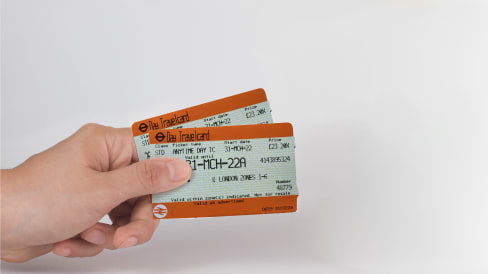
It’s also important to note that there is no real 1-day Travelcard for zones 1-2 (or 1-3, for that matter). To cover those areas with a daily Travelcard you need to buy a zone 1-4 Travelcard, which costs £15.20. Similarly, zones 1-5 do not have a daily Travelcard of their own, but there is a daily zone 1-6 Travelcard, which costs £21.50 for anytime travel or £15.20 for off-peak-only journeys.
However, as a visitor, the most useful Travelcard is the 7-day Travelcard, which costs £40.70 for zones 1-2 (where you are most likely to spend your time). Remember that a 7-day Travelcard (or a monthly or annual one) needs to be loaded on an Oyster card, which costs £7.00.
There is normally no need to extend your weekly Travelcard over zones 1-2 unless your accommodation is outside the city centre and you have to make the commute every day. If you need to make only one or two journeys outside of zones 1-2, we recommend you just pay for them individually with the pay-as-you-go method, since Travelcards become more expensive the more zones are added. For example, a zone 1-6 weekly Travelcard cost £74.40.
In the following table, you can see Travelcard prices for the inner city (zones 1-2).
| Duration |
|---|
| 1-2 |
| Duration | 1 day | 7-day | 1 month | 1 year |
|---|---|---|---|---|
| 1-2 | £15.20 | £40.70 | £156.30 | £1,628.00 |
If you want to know more about London Travelcards, read our dedicated article.
Pay-as-you-go fares and caps on Oyster and contactless
Aside from Travelcards, the other way to pay for transport in London is to pay for your journeys as you go by using Oyster cards and contactless payment methods. Oyster cards and contactless payment methods share the same pay-as-you-go journey fares. For the entire Underground network (Tube, DLR, Overground), the prices are calculated on the basis of peak/off-peak hour usage and zone coverage.
On the Underground network, the pay-as-you-go fares for an Oyster card or contactless payment method in zone 1 are £2.80 (peak hours) and £2.70 (off-peak). If you travel between zone 1 and zone 2, the cost will be £3.40 (at peak hours) and £2.80 (off-peak hours).
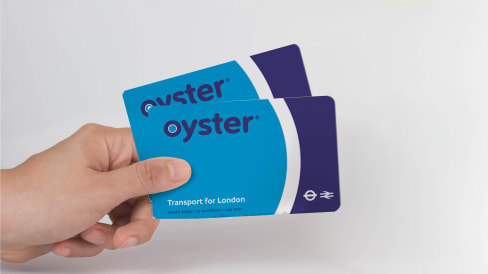
This system does not apply to bus journeys, which always cost £1.75 each. You can see a summary of the most common single journey costs in the following table.
| Transport |
|---|
| Hours |
| Zone 1 |
| Zone 1-2 |
| Transport | Bus | London Underground network | London Underground network |
|---|---|---|---|
| Hours | All hours | Peak hours | Off-peak |
| Zone 1 | £1.75 | £2.80 | £2.70 |
| Zone 1-2 | £1.75 | £3.40 | £2.80 |
Additionally, both Oyster cards and contactless payment methods have a price cap when it comes to pay-as-you-go travelling. This means that no matter how many journeys on transport you take during a specific period of time, you will never be charged over the set price cap.
The Oyster card and contactless payment methods both have a daily cap. Only contactless payment methods have a weekly cap. This is because if you have an Oyster, you can simply get a weekly Travelcards, which costs the same as the weekly cap on contactless methods (£40.70 for zones 1-2).
As a tourist, you are likely to only travel in zones 1-2, so your Oyster/contactless daily cap will be £8.10. If you travel exclusively by bus (anywhere in London), your daily cap will be £5.25. You can see the most common daily and weekly caps summarised in the following table.
| Zone |
|---|
| Zone 1-2 |
| Zone | Bus only cap (1-day) | Daily cap(Oyster & contactless) | Weekly cap(only contactless) |
|---|---|---|---|
| Zone 1-2 | £5.25 | £8.10 | £40.70 |
If you want to know more about Oyster cards and contactless payment methods, you will find all the information you need in our dedicated article.
Which London travel pass is more convenient?
This depends on how long you are staying and on the kind of bank card you are using.
For instance, if your bank card was issued outside of the UK, it is possible that you will be charged high conversion rates from your currency to British pound. If this is the case in your experience, we recommend not using contactless payment methods.
Instead, if you are in London for 5 days or less, you can use an Oyster card for pay-as-you-go travelling. If you are staying for 6 days or more, then a 7-day Travelcard is absolutely worth it.
If you are sure you won’t incur extra fees for the currency exchange, then using a contactless payment method is the easiest option for a stay of 1-5 days in London. If you are staying for 6-7 days, you will need to consider the exact time of your visit.
This is because the weekly cap on contactless applies strictly from Monday to Sunday, while the 7-day Travelcard is valid over the course of whichever 7 consecutive days (like Wednesday-Tuesday or Friday-Thursday, for example).
Therefore, if you are in London during the course of a calendar week, use a contactless payment method. If you are staying between calendar weeks, a 7-day Travelcard is the way to go.
Finally, due to its elevated price, a 1-day Travelcard is never worth its cost. Below you can find a comparison table of Travelcards and pay-as-you-go travelling.
| CardDuration |
|---|
| 1-2 |
| CardDuration | 1 day Travelcard | 1-day cap on pay-as-you-go | 7-day Travelcard | 1-week cap on pay-as-you-go |
|---|---|---|---|---|
| 1-2 | £15.20 | £8.10 | £40.70 | £40.70 |










